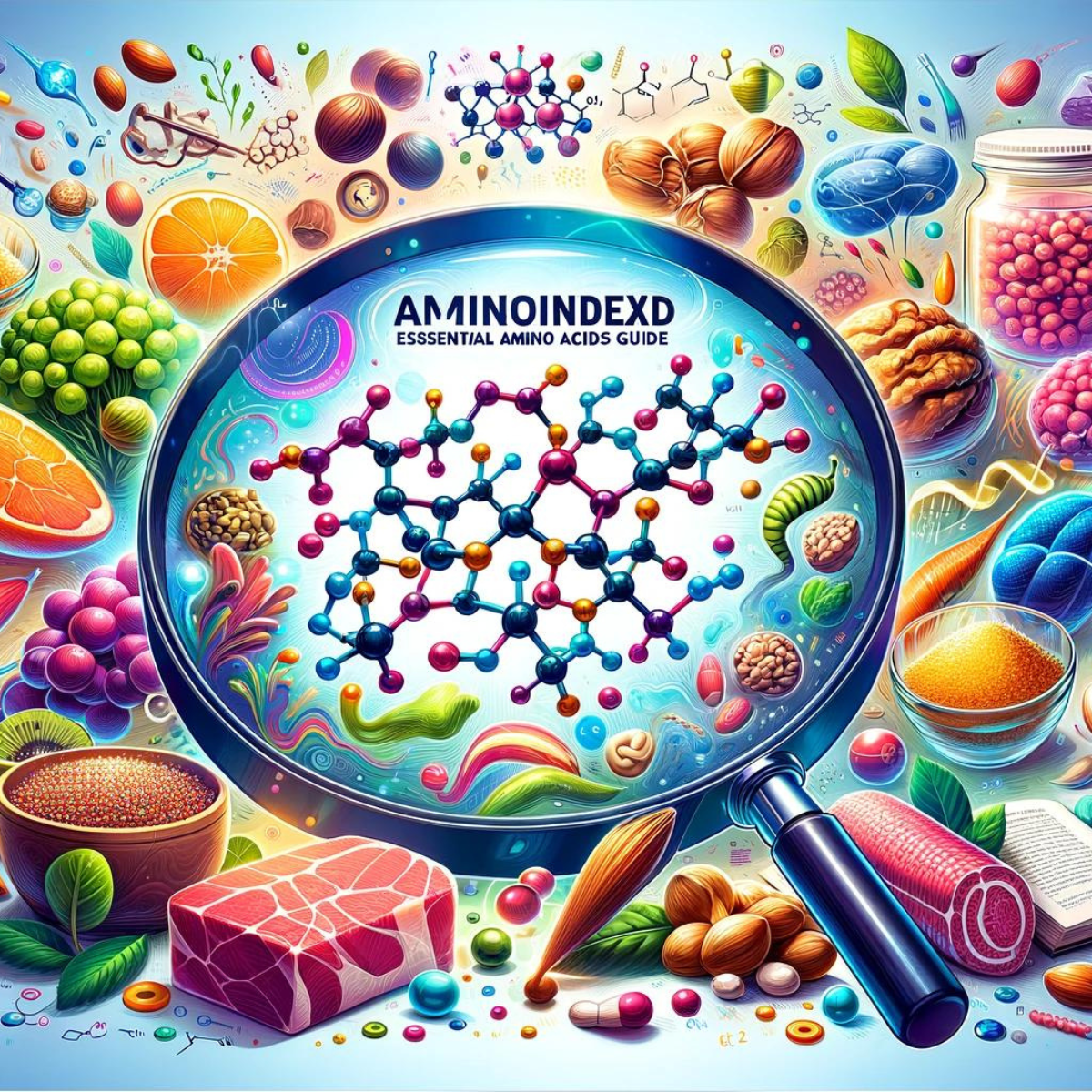Cholesterol: a silent factor shaping the health of our hearts. While essential for life, its imbalance poses risks, subtly influencing our heart's well-being. "Heart Hues: The Cholesterol Connection" explores this critical relationship, unveiling how cholesterol levels directly impact cardiovascular health. From understanding its dual nature to mastering its management, we're here to guide you through the essentials of maintaining a vibrant heart. Dive in as we demystify cholesterol, offering insights and strategies to nurture your heart's health.

Understanding Cholesterol: The Good and the Bad
Cholesterol, often painted with a broad brush as harmful, is more nuanced than many realize. It's a fatty substance essential for creating cell membranes, producing vital hormones, and aiding in the synthesis of vitamin D. However, not all cholesterol serves our bodies equally. It comes in two primary forms, each playing distinct roles in our cardiovascular health: LDL (Low-Density Lipoprotein) and HDL (High-Density Lipoprotein).
LDL Cholesterol: The Bad
LDL is commonly known as "bad" cholesterol. When present at high levels, it contributes to plaque build-up in the arteries, narrowing them and increasing the risk of heart disease and stroke. This plaque restricts blood flow and can lead to blood clots, posing severe health threats.
HDL Cholesterol: The Good
HDL, on the other hand, is heralded as "good" cholesterol. It acts as a cleanup crew, transporting cholesterol from different body parts back to the liver, where it's broken down and removed from the body. High levels of HDL are associated with a lower risk of heart disease, as it helps to keep arteries clear of blockages.
The Balance is Key
The interplay between LDL and HDL is critical in maintaining cardiovascular health. An imbalance—high LDL or low HDL—can tip the scales toward heart disease. Understanding your cholesterol levels through regular screenings can help you manage these risks and maintain a healthy heart.
In sum, cholesterol is a complex but essential part of our health. Keeping a close eye on LDL and HDL levels and maintaining a healthy balance can protect our hearts and reduce the risk of cardiovascular diseases.
The Hidden Dangers of High Cholesterol
High cholesterol is a stealthy adversary in the realm of health, often operating unnoticed until serious complications arise. Unlike many conditions that announce their presence with apparent symptoms, high cholesterol typically flies under the radar, making it a silent threat to cardiovascular health.
Why High Cholesterol is a Concern
At its core, the danger of high cholesterol lies in its contribution to plaque formation, a thick, hard deposit that can clog arteries. This condition, known as atherosclerosis, restricts blood flow to vital organs, which can lead to heart attacks, strokes, and peripheral artery disease. The insidious nature of these developments means that many individuals are unaware of their risk until it's too late.
Long-Term Impacts
The long-term consequences of untreated high cholesterol are profound. Over time, restricted blood flow can cause chronic heart conditions, such as coronary artery disease (CAD), heart attack, and stroke. Furthermore, reduced blood flow to the brain and limbs can lead to cognitive decline, memory loss, and, in severe cases, the need for amputation.
The Importance of Awareness
Awareness and proactive management are crucial. Regular cholesterol screenings can unveil your levels, offering a glimpse into your cardiovascular health before irreversible damage occurs. Understanding your risk factors—such as diet, lifestyle, and genetics—also plays a pivotal role in prevention and management.
High cholesterol may be silent, but its effects are tangible and potentially life-altering. Recognizing the hidden dangers of high cholesterol is the first step towards safeguarding your health against its stealthy advance.

Risk Factors for High Cholesterol
High cholesterol can silently jeopardize our health, often without any overt symptoms. Recognizing the risk factors is the first step towards mitigating this invisible threat. These factors can broadly be categorized into those within our control and those beyond it.
Lifestyle Factors:
- Diet: Consuming foods high in saturated fats, trans fats, and cholesterol can raise blood cholesterol levels. These are often found in red meat, dairy products, fried foods, and processed snacks.
- Physical Inactivity: Lack of exercise can contribute to weight gain, elevating your LDL (bad cholesterol) and lowering your HDL (good cholesterol).
- Smoking: Smoking damages the walls of your blood vessels, making them more prone to accumulate fatty deposits. It also lowers HDL cholesterol.
Genetic Factors:
- Family History: Genetics play a significant role. If your family has a history of high cholesterol or heart disease, you're at a higher risk.
- Age and Gender: Cholesterol levels naturally rise as we age. Men tend to have higher levels in the younger generation, while women see an increase after menopause.
Health Conditions:
- Diabetes: High blood sugar contributes to higher LDL cholesterol and lower HDL cholesterol.
- Obesity: A body mass index (BMI) of 30 or higher is linked to increased LDL and decreased HDL cholesterol.
Other Factors:
- Certain Medications: Some drugs, including steroids and progestins, can raise cholesterol levels.
- Stress: Chronic stress may indirectly influence cholesterol levels by affecting your lifestyle choices, such as eating habits and physical activity.
Understanding these risk factors empowers us to take proactive steps in managing our cholesterol levels through lifestyle changes, regular screenings, and, when necessary, medication. Awareness is the first defence against the hidden dangers of high cholesterol.

Understanding the Importance of Cholesterol Checks
Regular cholesterol screenings are vital for detecting high cholesterol levels early, allowing timely interventions to prevent heart disease and stroke. These tests measure LDL (bad cholesterol), HDL (good cholesterol), total cholesterol, and triglycerides in your blood.
How to Monitor Your Cholesterol
Cholesterol is checked through a simple blood test called a lipid panel or lipid profile. Here's what you need to know about getting tested:
- Preparation: Fasting 9-12 hours before the test is usually required to ensure accuracy, as food and drink can affect your lipid levels.
- Procedure: The test involves drawing a small amount of blood, typically from your arm.
- Frequency: The American Heart Association recommends that all adults age 20 or older have their cholesterol checked every 4 to 6 years as part of a cardiovascular risk assessment. More frequent testing may be necessary if your initial results are abnormal, if you have a family history of high cholesterol or heart disease, or if you're at increased risk due to other health conditions.
When to Start Monitoring
- Adults: Begin regular screenings at age 20 and continue throughout adulthood.
- Children and Adolescents: The American Academy of Paediatrics recommends cholesterol testing once between the ages of 9 and 11 and again between 17 and 21. Early testing is crucial for children with a family history of heart disease or high cholesterol.
Adjusting Frequency Based on Risk Factors
If you have risk factors such as diabetes, heart disease, stroke, high blood pressure, or a family history of high cholesterol, your healthcare provider may recommend more frequent testing. Similarly, lifestyle changes, such as diet and exercise or starting cholesterol-lowering medication, may necessitate adjustments in how often you get tested.
Key Takeaway
Regular monitoring of your cholesterol levels is a proactive step towards heart health. By understanding when and how often to get tested, you can work with your healthcare provider to manage your cholesterol effectively and reduce your risk of cardiovascular disease.

Practical Steps to Manage Your Cholesterol
Adjust Your Diet
Reduce Saturated and Trans Fats: Limit foods high in saturated fats, such as red meat and full-fat dairy products, and avoid trans fats found in many fried and processed foods. These changes can lower your LDL (bad cholesterol).
Eat More Omega-3 Fatty Acids: Foods rich in omega-3s, like salmon, mackerel, walnuts, and flaxseeds, don't affect LDL cholesterol but have heart-healthy benefits, including raising HDL (good cholesterol).
Increase Soluble Fibre: Foods high in soluble fibre, such as oats, beans, lentils, apples, and pears, can help reduce cholesterol absorption into your bloodstream.
Embrace a Healthier Lifestyle
Exercise Regularly: Regular physical activity can help raise HDL cholesterol. Aim for at least 150 minutes of moderate aerobic or 75 minutes of vigorous activity each week.
Quit Smoking: Smoking improves your HDL cholesterol level and benefits your heart and lungs.
Limit Alcohol: Drinking in moderation can potentially lead to higher HDL levels, but excessive alcohol intake can have adverse effects. Guidelines suggest up to one drink daily for women and two for men.
Monitor Your Weight
Maintain a Healthy Weight: Losing weight can help lower your LDL cholesterol. Even a slight weight loss of 5 to 10 per cent can improve cholesterol levels.
Consider Medication
Consult with Your Healthcare Provider: For some individuals, lifestyle changes alone aren't enough to reach healthy cholesterol levels. Medications, such as statins, may be necessary. Your healthcare provider can recommend the best treatment plan based on your health profile.
Stay Informed and Regularly Check Your Levels
Stay Educated: Understanding cholesterol and its effects on your body allows you to make informed health decisions.
Regular Screenings: Keep track of your cholesterol levels through regular screenings to ensure your management strategies are effective.

The Power of Prevention
Preventive measures against high cholesterol and its associated risks cannot be overstated. Adopting a proactive approach towards cholesterol management is akin to laying a solid foundation for a fortress that guards against cardiovascular diseases. The power of prevention lies in its ability to significantly reduce the risk of heart attacks, strokes, and other heart-related conditions before they have a chance to manifest.
Early Detection: Regular cholesterol screenings are a cornerstone of prevention. By identifying high cholesterol early, individuals can take steps to manage it before it leads to more severe health issues.
Lifestyle Modifications: The choices we make every day—what we eat, how much we move, whether we smoke—profoundly affect our cholesterol levels and overall heart health. Simple changes, such as incorporating more fruits and vegetables into your diet, increasing physical activity, and quitting smoking, can lead to significant improvements.
Educational Empowerment: Being informed about cholesterol and its impacts empowers individuals to make healthier choices. Understanding the role of different types of cholesterol and how lifestyle factors influence them can motivate positive changes.
Community Support: Encouragement and support from family, friends, and healthcare providers play a crucial role in maintaining a heart-healthy lifestyle. Supporting groups or participating in community health programs can provide additional motivation and resources.
Integrating Health into Everyday Life: Prevention isn't just about avoiding disease; it's about incorporating healthy habits into your daily routine to improve overall quality of life. This holistic approach to health can transform prevention from a task into a rewarding lifestyle.
By harnessing the power of prevention, individuals can lower their cholesterol levels and enhance their vitality, resilience, and longevity. Preventive measures offer a pathway to a healthier heart and a fuller, more vibrant life. Embracing these practices today can pave the way for a healthier tomorrow.
Cholesterol Support: Vitamin Supplements & Natural Remedies
Incorporating certain vitamin supplements and natural remedies can be beneficial in the quest for a healthier heart and lower cholesterol levels. While lifestyle changes remain foundational, these supplements can provide additional support. Always consult a healthcare provider before starting any new supplement regimen, especially if you have existing health conditions or are taking other medications.
Vitamin Supplements
- Omega-3 Fatty Acids: Essential for heart health, omega-3 supplements can lower triglycerides and may modestly increase HDL cholesterol.
- Niacin (Vitamin B3): Known to lower LDL cholesterol and triglycerides, niacin can also raise HDL cholesterol levels. Be aware of potential flushing and consult a healthcare provider for appropriate dosing.
- Psyllium Fibre: A soluble fibre supplement that can help reduce LDL cholesterol by interfering with its absorption.
- Coenzyme Q10 (CoQ10): While more research is needed, CoQ10 might help improve heart health and is often recommended for statin users.
- Red Yeast Rice Contains monacolin K, which is chemically identical to the active ingredient in some cholesterol-lowering medications. Caution is advised due to variability in potency and potential side effects.
Natural Remedies
- Garlic: Regular consumption of garlic or garlic supplements has been associated with slight improvements in cholesterol levels.
- Green Tea: Both green tea and its extract contain antioxidants that may assist in lowering LDL cholesterol levels.
- Plant Sterols and Stanols: Found in fortified foods (like some margarine and orange juices) and in supplement form, they can help reduce cholesterol absorption in the intestine.
- Policosanol: Derived from sugar cane, policosanol has been touted for its cholesterol-lowering effects, though more research is needed for conclusive evidence.
- Bergamot: Some studies suggest that bergamot extract can significantly affect cholesterol levels, but it should be used cautiously and under medical advice.
Key Takeaways
Integrating these supplements and natural remedies into your health regimen could support your journey towards better heart health and cholesterol management. Remember, accessories should complement, not replace, conventional treatments and healthy lifestyle choices. Consulting with a healthcare provider ensures that your approach to cholesterol management is safe and tailored to your individual health needs.
Shop Healthy Heart Essentials
Conclusion
In wrapping up "Heart Hues: The Cholesterol Connection," remember that managing cholesterol is within our control and crucial for heart health. Simple lifestyle tweaks, regular screenings, and informed choices can dramatically reduce the risk of heart disease. Embrace these changes not as burdens but as opportunities for a fuller, healthier life. Let's commit to keeping our heart's hue vibrant and our future bright.
Disclaimer: The information in "Heart Hues: The Cholesterol Connection" is only intended for general informational and educational purposes. It is not intended as medical advice, diagnosis, or treatment. Always seek the advice of your physician or other qualified health provider with any questions regarding a medical condition or before making any health-related decisions or starting any new diet or exercise program. Never disregard professional medical advice or delay seeking it because of something you have read on this blog.
References
- American Heart Association. (2024). "What is Cholesterol? Cholesterol 101 introduction:" https://www.heart.org
- Centers for Disease Control and Prevention. (2023). "LDL and HDL Cholesterol: What's Bad and What's Good?" https://www.cdc.gov
- Mayo Clinic. (2023). "High Cholesterol." https://www.mayoclinic.org
- National Heart, Lung, and Blood Institute. (Year). "High Blood Cholesterol." https://www.nhlbi.nih.gov
- American Academy of Paediatrics. (2022). "Cholesterol Levels in Children and Adolescents." https://www.aap.org



















